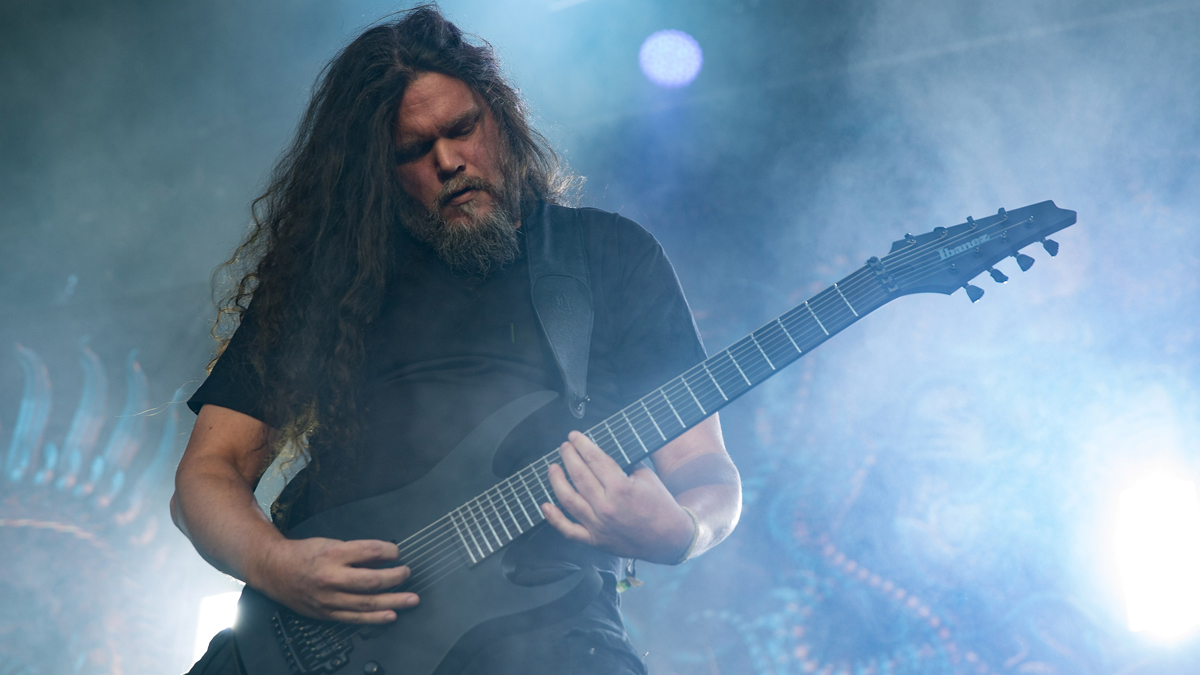Meshuggah reveal surprise amp shakeup during the recording of new album, Immutable
Mårten Hagström explains why one particular tube head was behind the tones on the extreme-metallers’ latest

Meshuggah pioneered the sound of djent long before the onomatopoeic term became a genre, and key to the tone of their early, game-changing brand of guttural extended-range chug was the Mesa/Boogie Dual Rectifier.
Guitarists Mårten Hagström and Fredrik Thordendal have had an on/off love affair with tube heads since they set metal on a new path in the mid-to-late ’90s, turning to everything from the Randall Satan to the Line 6 Vetta, Fractal Axe-Fx and even a signature Fortin over the past two decades.
For the band’s previous record, 2016’s The Violent Sleep of Reason, they returned to the Boogies, along with JCM800s and the occasional Orange. But their latest release, Immutable, saw the heavy trendsetters turn to the latest incarnation of a metal staple.
“In the studio, most of our albums have fallen back on Dual Rectifiers. Those are the go-to amps for us,” Hagström told Total Guitar’s Amit Sharma.
“This time, I found the EVH 5150 III 100-watt heads to be exactly what we were looking for. They had the gain, control and Mesa/Boogie-ness we needed, but with a more raw and unbridled kind of tone. They sounded less predictable, more organic.”
There were changes on the pedal front, too, with Hagström employing a stompbox designed by one of the djent movement’s foremost ambassadors.
“Instead of the usual Fortin 33 pedal as a booster, I actually ended up using Misha Mansoor’s Precision Drive,” he reveals. “That was suggested by our singer [Jens Kidman], as he had one. The gate on it isn’t really all that good – it’s cool for live use but in the studio it needs some work. But the sound of the Precision Drive going into the EVH was super.
Get The Pick Newsletter
All the latest guitar news, interviews, lessons, reviews, deals and more, direct to your inbox!
“I would use the preamp of the EVH’s second channel and run it through the power amp of a Mesa/Boogie Roadster, then out through EVH cabs. For the clean parts, I used my Roland JC-120 head.”
Guitar-wise, there were fewer surprises, with “95 percent” of the record tracked on the guitarist’s Ibanez M8M Custom. As for what Hagström’s co-guitarist used, don’t ask him.
“I don’t know what Fredrik used because he recorded in his studio,” Hagström says. “He wasn’t around for any of this album and hasn’t been writing for years – he’s been busy doing his own thing. For the four leads he recorded at his place, I’m pretty sure it was his [signature] Ibanez Stoneman.”
For the full interview with Hagström, pick up a copy of the latest issue of Total Guitar, available now from Magazines Direct.

Mike is Editor-in-Chief of GuitarWorld.com, in addition to being an offset fiend and recovering pedal addict. He has a master's degree in journalism from Cardiff University, and over a decade's experience writing and editing for guitar publications including MusicRadar, Total Guitar and Guitarist, as well as 20 years of recording and live experience in original and function bands. During his career, he has interviewed the likes of John Frusciante, Chris Cornell, Tom Morello, Matt Bellamy, Kirk Hammett, Jerry Cantrell, Joe Satriani, Tom DeLonge, Ed O'Brien, Polyphia, Tosin Abasi, Yvette Young and many more. In his free time, you'll find him making progressive instrumental rock under the nom de plume Maebe.
“If you’ve ever wondered what unobtanium looks like in amp form, this is it”: Played and revered by Stevie Ray Vaughan, Carlos Santana, and John Mayer, Dumble amps have an almost mythical reputation. But what's all the fuss really about?
“For the price, it’s pretty much unbeatable”: Harley Benton JAMster Guitar review









